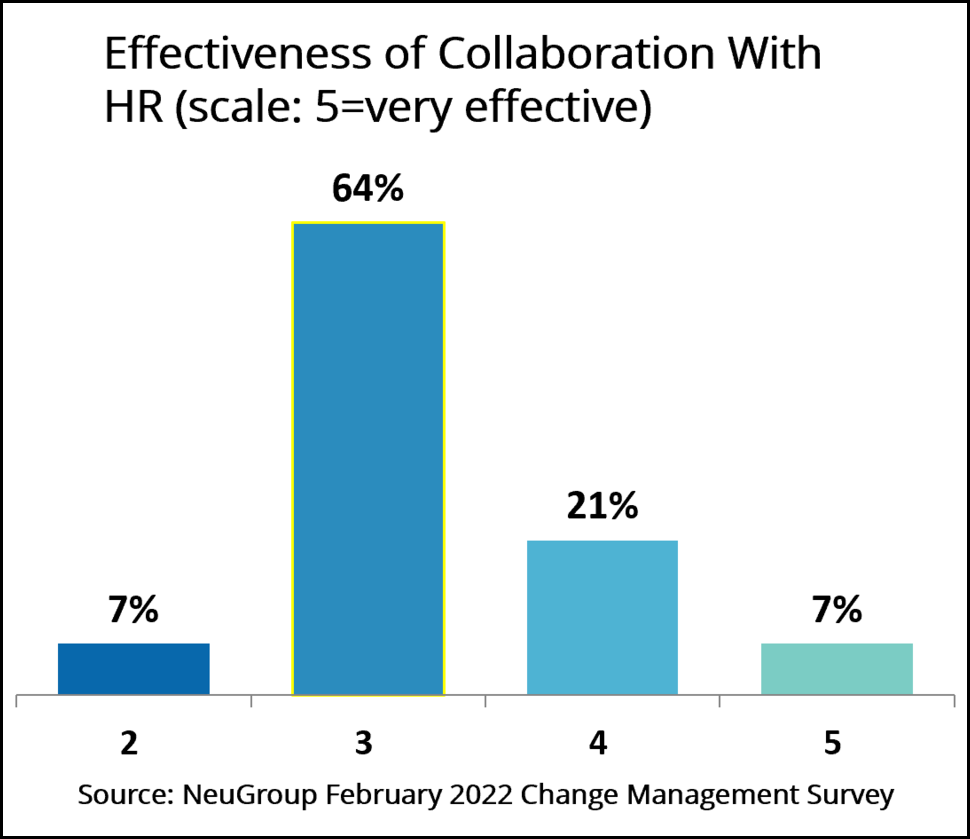
Finance teams in the throes of change need leadership, resources and collaboration with HR to overcome obstacles.
Recession fears are intensifying the pressure on finance and other G&A functions to cut costs. The result is often a reduction in headcount. To meet the challenge of doing more with less, treasury and finance organizations are looking for new ways to work more efficiently.
- At the spring meeting of NeuGroup for Mega-Cap Treasurers, one member reported that his group has already been asked to match the budget-reduction mandate issued to other functions.
- As a result, treasury had to let go of staff and find ways to leverage the company’s offshore business process outsourcing provider (BPO) to execute critical activities.
- But outsourcing to third parties isn’t the only way treasurers are responding to rising demand to decrease headcount; some are migrating activities to shared services centers and fast-tracking digital transformation projects.
It’s about the people. Redesigning and automating legacy processes is critical to the sustainability of the finance organization. However, getting staff on board can be a significant obstacle to the success of a transformation initiative.
- Respondents to NeuGroup’s February 2022 Change Management Survey ranked fear of change as the second largest hurdle to effective change management (see chart below).
- In many cases, new tools like machine learning raise concerns about job losses.
- Also common: ML algorithms can be viewed as black boxes and thus rejected by staff who prefer using Excel. “You have to have transparency,” said a member of NeuGroup for Mega-Cap Heads of FP&A at a recent monthly session. “If that means using a less-complex algorithm that people can understand, that is better than pushing a highly sophisticated one that no one wants to use,” she said.
- In another case, a member company rolled out Tableau to global finance staff to empower them to conduct on-demand analysis. “The result was a proliferation of models and data definitions, which did not deliver the desired outcomes.” Cognizant of people’s inclination to build their own model, the company is developing a standard dashboard that everyone can use.

Changing for the better. An effective change management program is essential to the success of transformation initiatives; however, the survey revealed that:
- Only 7% of respondents have highly effective change management programs.
- More worrisome: 43% said their change management project plan is not aligned with the overall transformation initiative.
During the FP&A group’s February session, members shared challenges and recommended opportunities for improvement.
Strained resources. To sustain the program over time, finance needs dedicated leadership and resources. On a positive note, the survey found that 64% of companies already have a dedicated change management leader or team and 62% have a change management budget as part of their overall transformation budget (typically under 5% of that total cost).
However, as cost pressures mount, companies are pulling back on what they consider soft spending; NeuGroup members are reporting they are losing critical resources.
- “We used to have four people dedicated to change management,” according to one member. “Now we have one.” That single resource supports four FP&A groups and is pulled in too many directions, she said.
- Another member initially had a team of dedicated HR staff assigned to collaborate on the program, but no longer does. “We have a single resource who is now embedded in finance.”
- With change being a constant, and limited specialized resources, the question arose whether the capability should be embedded in everyone’s job. One member cautioned against this approach: “When you make something everyone’s job you make it nobody’s job.”
Fuzzy accountability. The survey also showed that change management is often owned jointly with HR. But the respondents said the current level of collaboration leaves a lot to be desired.
- Half the respondents said working closely with HR is very important or even critical, yet 71% ranked the effectiveness of their collaboration with HR at three or less out of five (see chart).
- While finance may own the transformation change management program, HR typically runs talent development programs at the enterprise level, and the two may not be aligned. The result is a disconnect in terms of building staff’s long-term skills and competencies. “We end up doing only very short-term training and upskilling,” a member said, thus not providing continuity of support.

Finding the right KPIs. Ultimately, in order to assess the effectiveness of the change management program, members need hard data. But to measure the success of the effort, finance requires a set of KPIs that are aligned with its transformation objectives.
- Only 43% of respondents said they use KPIs to measure the change management program’s success.
- And, as a member at one large company found, “just because you have KPIs does not mean you have the right KPIs.” After a three-year transformation process, “we found that we weren’t necessarily measuring the right things,” she said.
- “The first time around, we used quantitative and qualitative metrics, but going forward, the path is less clear,” she added. “We decided that the KPIs we used before were not truly effective in assessing our success.”


